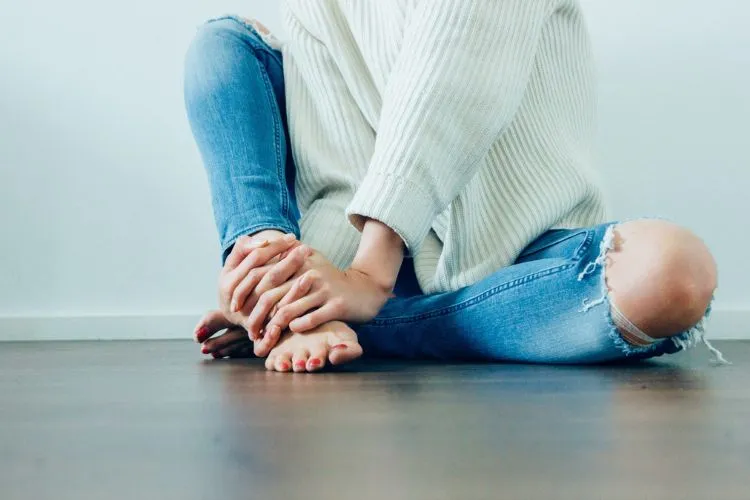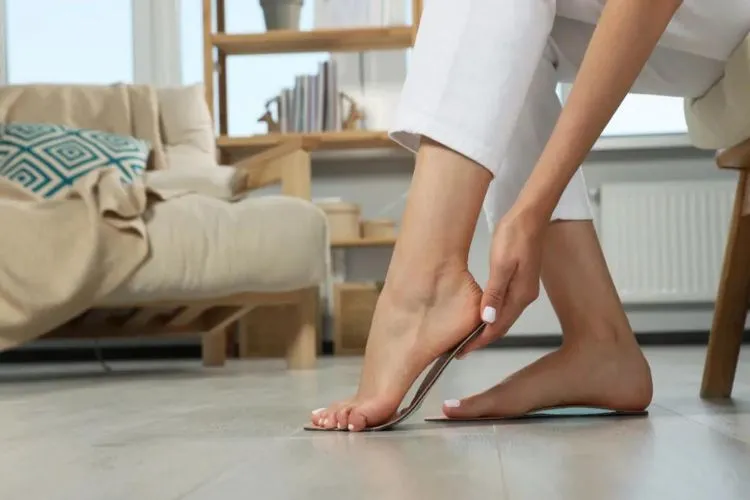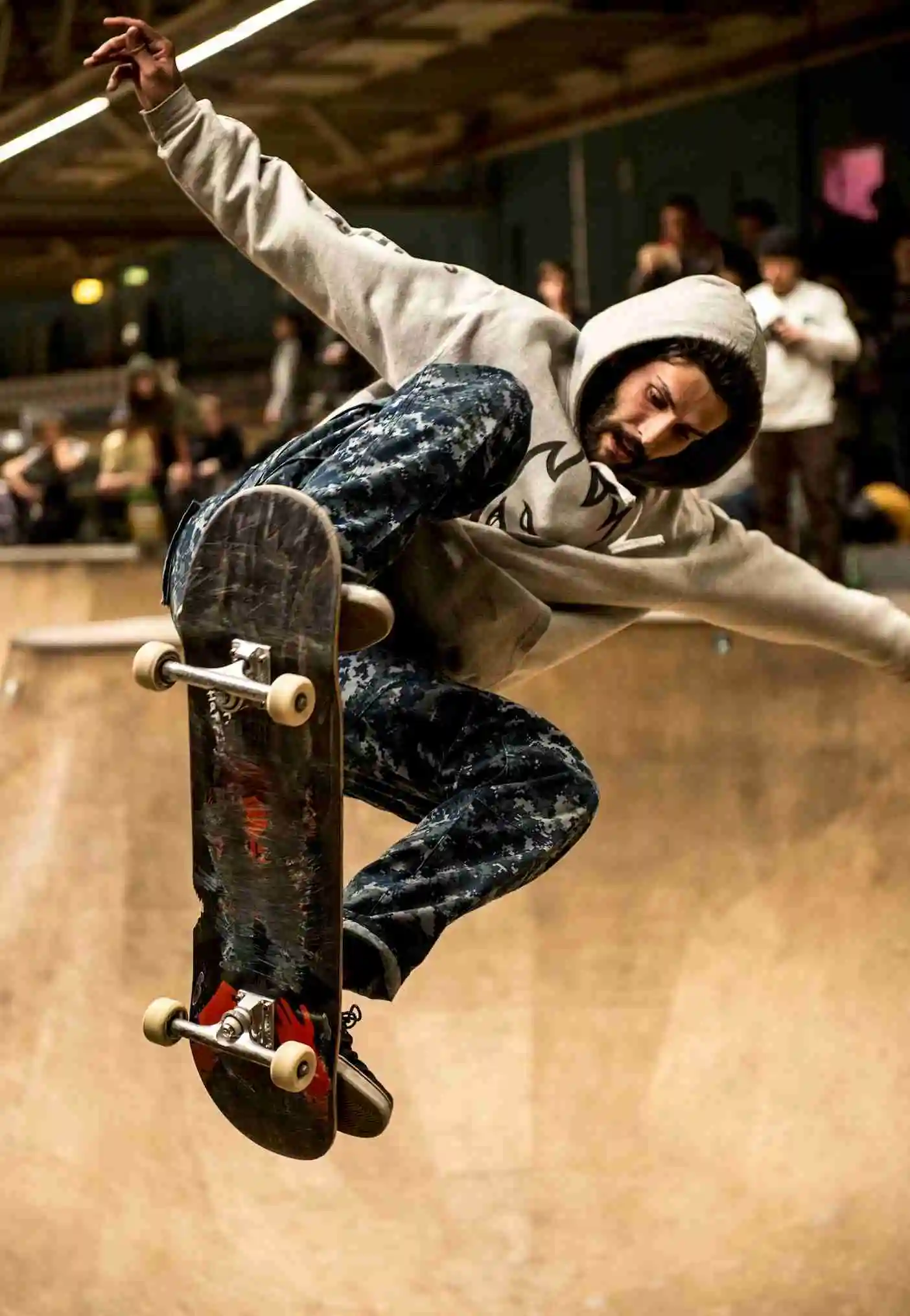Skating, with its mix of skill, balance, and speed, attracts many to its thrills. Yet, this exciting sport can also bring unwelcome companions: feet and ankle pain. Skaters, from novices to the experienced, often face these aches.
Recognizing and treating them timely ensures the continuation of this passion without harm. Let’s dive into how to ease feet and ankle pain after skating.

Common Causes of Feet and Ankle Pain After Skating
The root causes of feet and ankle pain in skaters are multifaceted. Ill-fitting skates are a primary suspect. Skates that are too tight can restrict blood flow, while those too loose may result in unnecessary friction and pressure.
Another factor is the intense or prolonged skating sessions without adequate breaks, which can overstrain the muscles. Lastly, improper skating technique can lead to abnormal stress on the feet and ankles.
How To Ease Feet and Ankle Pain After Skating?
Addressing the pain starts with the RICE method—Rest, Ice, Compression, and Elevation. This approach aims to reduce swelling and pain. Rest prevents further strain, ice reduces swelling, compression aids in minimizing inflammation, and elevation helps in draining excess fluids away from the injured area.
For some, over-the-counter medication might offer temporary relief from pain. Yet, it is crucial to use these drugs wisely and in moderation. Simple stretches and exercises can also provide significant relief.
Gentle movements improve blood flow and relax the muscles. A routine stretching exercise focusing on the feet and ankles can work wonders in easing the tension.
Preventative Measures
Prevention plays a vital role in skating pain-free. Ensuring skates fit correctly and using proper lacing techniques can drastically reduce the chances of pain. Skaters should not overlook the importance of pre- and post-skating stretches.
These exercises prepare the muscles for the activity ahead and aid in recovery after. Regular strengthening exercises fortify the feet and ankles, making them less prone to injuries.
When to Seek Professional Help
Sometimes, despite our best efforts, the pain lingers or intensifies. Such scenarios signal the need for professional help. Persistent pain might indicate more severe conditions like fractures or tendonitis.
A visit to a podiatrist or physiotherapist becomes essential. These professionals can offer tailored advice and treatments, including physical therapy or custom orthotics.

Essential Tips for Long-Term Skating Health
Adopting a holistic approach to skating health can significantly reduce the risk of foot and ankle pain. Choosing the right skates, suited to one’s feet and skating style, lays a solid foundation.
Wearing suitable protective gear, including socks that offer good support, further cushions against impact and stress. Moreover, embracing a balanced training routine with periods of rest and cross-training activities ensures muscles remain strong and flexible without being overworked.
You may also find useful: Does Skateboarding Build Muscle?
Understanding Your Foot Type and Arch Support
Understanding your foot type and the level of arch support you require is pivotal for both comfort and performance in skating. Foot types primarily vary across three categories: flat arches, normal arches, and high arches. Each type influences how weight and stress are distributed across your feet during skating, affecting your balance and propensity for injury.
Flat arches, or overpronation, may lead to increased stress on the inside part of the feet. Skaters with flat arches often benefit from skate shoes or insoles that offer enhanced arch support and stability, mitigating the risk of injuries like tendonitis.
Meanwhile, individuals with high arches, or underpronation, experience more strain on the outer side of the feet. They may require shoes with cushioning and flexibility to absorb shock and offer better support.
Those with normal arches typically distribute weight more evenly, making them versatile in their skate shoe options, though they still benefit from moderate arch support for optimal comfort and performance.
To determine your foot type, a simple “wet test” can be performed at home. Wet your foot and step onto a paper bag or concrete where you can see the imprint. A full imprint indicates flat arches, a very narrow connection between the heel and forefoot suggests high arches, and a moderate one signifies normal arches.
Once your foot type is known, selecting the appropriate footwear and insoles becomes a targeted process. Look for skate-specific insoles or shoes designed to support your specific arch type, which can not only enhance your skating experience but also help prevent foot and ankle pain.

Seasonal Considerations for Skaters
Seasonal variations pose unique challenges for skaters, impacting both performance and foot health:
- Winter: Keep feet warm and dry to prevent numbness and frostbite. Use thermal socks and ensure waterproof boots if skating outdoors.
- Summer: Opt for breathable socks and footwear to prevent overheating and excessive sweating, which can cause blisters.
- Indoor Skating: Maintain consistent footwear choices, focusing on support and comfort.
- Outdoor Skating: Adapt to surfaces; use thicker socks for colder conditions and moisture-wicking types for warmer weather.
Frequently Asked Questions (FAQs)
How long should foot and ankle pain last after skating?
Typically, minor pain should subside within a few days with proper care. However, if the pain lasts longer or worsens, seeking professional advice is wise.
Can insoles or orthotics help prevent skating-related foot pain?
Yes, insoles or custom orthotics can provide additional support and cushioning, distributing pressure evenly across the foot, which can help in preventing pain.
Is it normal for my feet to hurt after trying new skating moves?
It’s common to experience some discomfort as your feet and ankles adjust to new stresses. Nevertheless, persistent or severe pain is a red flag that should not be ignored.
Conclusion
Feet and ankle pain after skating, though common, should not be taken lightly. Simple, immediate measures and a proactive approach to prevention can help keep the pain in check, allowing skaters to pursue their passion with minimal discomfort.
Remember, listening to your body and responding with kindness through appropriate care and professional advice when needed, lays the foundation for a long and joyous skating journey.

Matthew James is a passionate skater who wanted to create a platform to share his love for skating with others. With a vision to create a vibrant community of skaters, he aims to provide a space where skaters of all levels can connect, learn, and grow together.
